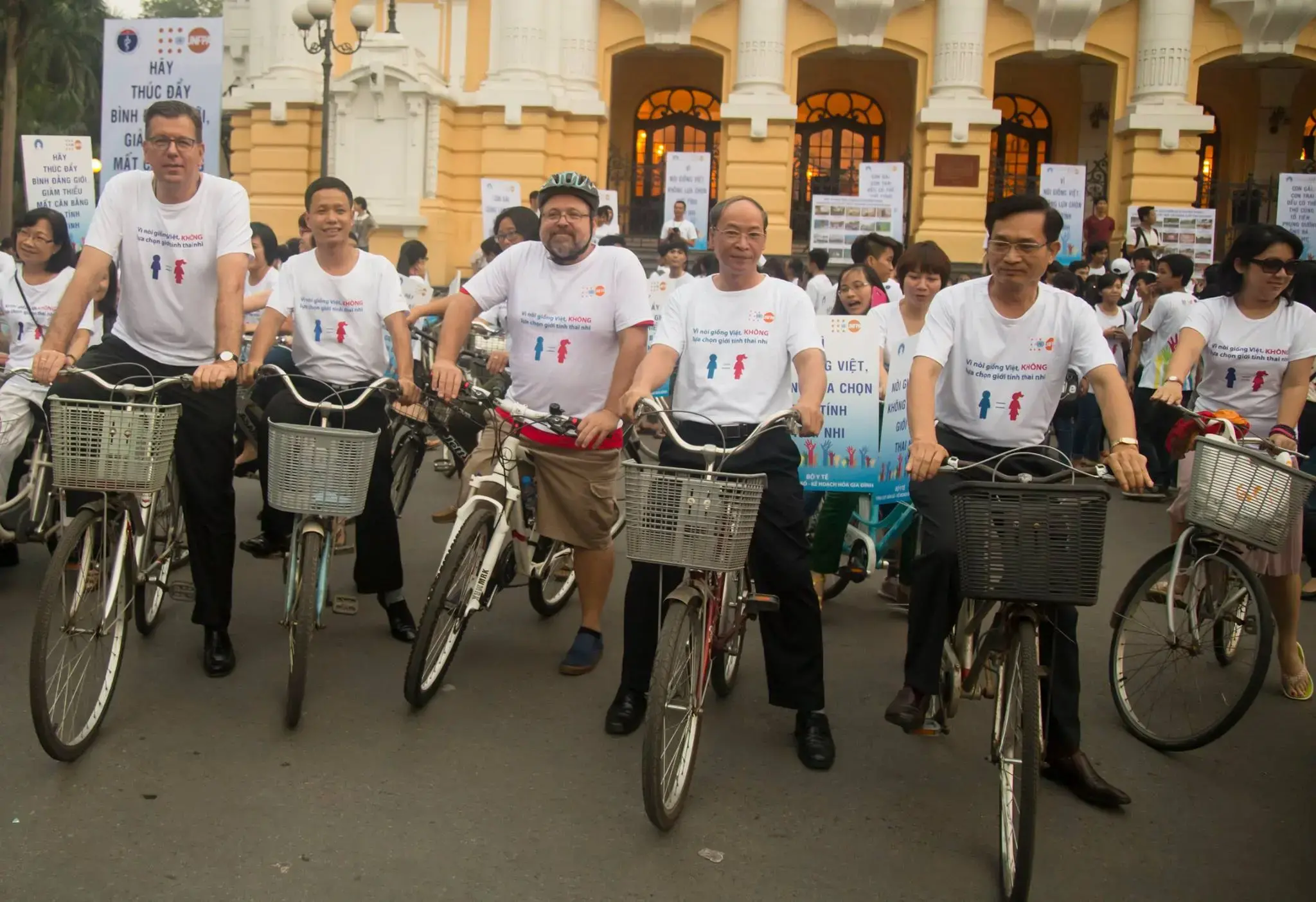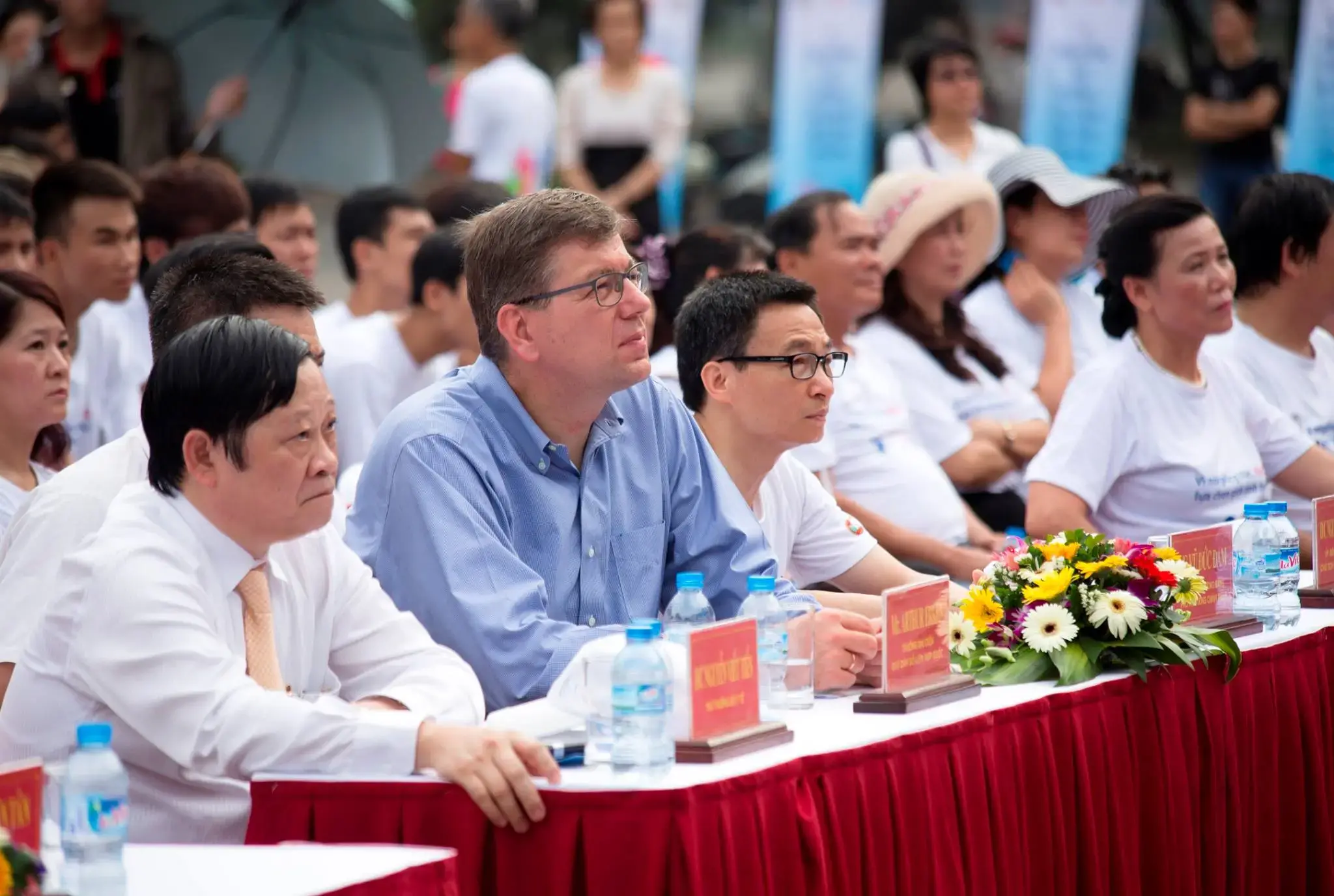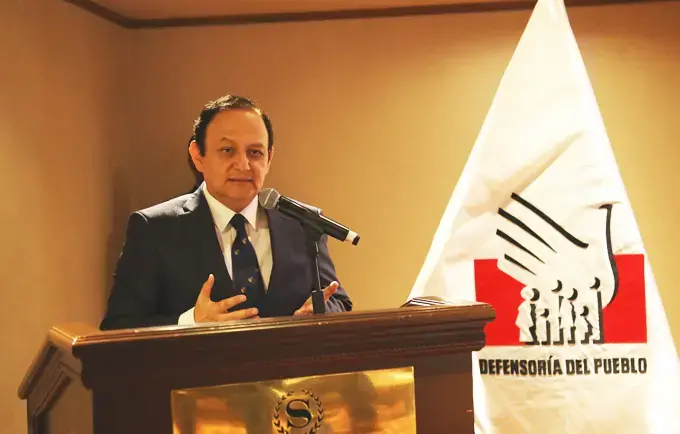Colleagues and friends, good day! Xin chao!
On behalf of the United Nations Population Fund, UNFPA, it’s a pleasure to be here with you. I also bring you greetings from our newly-appointed Executive Director, Dr. Natalia Kanem, who will be joining us later in the week.
What a pleasure as well to see so many young people from so many countries working on what matters to young people - sexual and reproductive health and rights!
Let us thank the Youth Conference organizers, the Vietnam Public Health Association, for ensuring that young people are contributing to this important conference. We need more and more youth voices to strengthen advocacy in the region and young people to take action - both as partners and as leaders.
The theme of this conference is very strong and very bold: Leave No One Behind! Justice in Sexual and Reproductive Health. It links very closely to the commitments and vision of the Programme of Action that emerged from the 1994 International Conference on Population and Development, which guides the work of UNFPA – as well as the vision of the 2030 Sustainable Development Agenda and its Sustainable Development Goals, whose ultimate pledge is to leave no one behind.
Justice in this overarching context is ensuring that those who have been left behind in the past are now truly reached first, going forward into the future.
There are so many opportunities in the 21st century. We have the largest population of young people ever in history. So many countries have the potential to reap what we call a demographic dividend. In this interconnected age, this social media age, young people are linked up with each other – and with the world at large – as never before.
This has opened up new possibilities, new horizons that people of my generation – from both developed and developing countries – could scarcely have dreamed of.
But for countries to achieve the demographic dividend – and for young people to realize the tantalizing possibilities – we must act swiftly to invest in young people strategically and compassionately, and reach those furthest behind first.
This means investing wisely, from the very beginning of life, in the basic pillars of well-being and prosperity – health and education, linked of course to opportunities for gainful employment.
However, too often investments in health and education begin to dwindle when childhood gives way to adolescence – and dwindle even further when adolescence transitions into adulthood.
This lack of investment at these critical points of life, including investments in sexual and reproductive health and rights, results in harmful outcomes in terms of health and education; in terms of employment opportunities and prospects; and, overall, in terms of a country’s socio-economic future.
Evidence across this region clearly shows that young people are being left behind, particularly in relation to their sexual and reproductive health and rights, often due to restrictive laws or policies that limit access to information and essential services -- restrictive laws or policies that often stem from socio-cultural norms and practices that truly need to be re-examined and indeed overhauled to ensure the physical and psycho-social health and wellbeing of one and all.
I’ll expand on these issues shortly, but first let’s consider some sobering statistics from our Asia-Pacific region.
In this, the 21st century, despite so many advances in health and science, and with so much knowledge accumulated over the years, we see that:
- Approximately 10,000 adolescent girls die every year from complications of pregnancy in Asia and the Pacific;
- 5.2 million adolescent pregnancies occur every year, and in several countries adolescent pregnancies are actually increasing despite the global trend of decreasing adolescent pregnancy;
- 6.3 million sexually active adolescent girls have an unmet need for contraception – that’s 24 percent of married adolescent girls, and 50 percent of unmarried sexually active girls;
- 510,000 young people are living with HIV, with 90,000 new infections every year in Asia-Pacific alone. Many of these are young people from key populations – young MSM, transgender young people, young people selling sex or using drugs.
Why should this be? We need to honestly ask ourselves tough questions.
For example, are current policies and programmes directed at the sexual and reproductive health and rights of young persons across the spectrum are truly beneficial or detrimental?
Are we approaching the issues that impact and affect young persons through the lens of genuine gender equality and empowerment?
Or are we allowing age-old patriarchy and other harmful socio-cultural constructs to impede progress and advancement?
And for all of these important and complex questions, we need to provide direct and honest answers.
It’s a fact that each and every one of the 1.2 billion adolescents around the world today will go through puberty, the biological onset of adolescence.
Some will be well-prepared, continuing their education and acquiring the information and skills they need to negotiate safe and pleasurable sexual relationships; choose their own partners; decide if and when to start a family; have options for decent employment; and play important roles in the community
But too many adolescents, particularly girls, are woefully unprepared for this new and challenging phase in their lives. They leave school early, receive no sexuality education, enter marriages when they are still children, have children when they are still themselves children.
Underlying gender inequality, exacerbated by patriarchy and other harmful socio-cultural factors, results in an adolescent girl’s world shrinking as soon as she reaches puberty – forced to leave school, early marriage and childbearing with limited options for a career.
On a related note, long-embedded stigma and discrimination mean that we are not reaching or investing in marginalized young people and adolescents – those in remote rural communities, urban slums, adolescents with disabilities, young migrants and ethnic minorities, young people from key populations.
We are not committed enough and not investing enough to ensure that all adolescents, both girls and boys, but especially girls, can reach their full potential.
It’s not that we don’t know what should be done. We have the solutions, as clearly illustrated by the Lancet Commission on Adolescent Health and Wellbeing.
We know that keeping girls in school reduces adolescent pregnancy by over 9 births per 1000, for every additional year of school.
We know that child marriage has been reduced globally through a range of multi-sectoral approaches. We now need to reach the poorest and the rural communities to end child marriage.
We also know thanks to a wealth of clear evidence that implementing comprehensive sexuality education or CSE -- starting in early primary school and with a strong focus on gender equality -- enables boys and girls to have the communication skills and respect they need for each other, along with self-respect and a respect for diversity.
CSE imparts critical information and builds and strengthens decision-making skills, so that adolescents make choices that are safe and consensual, or delay sex. But can we honestly say that comprehensive sexuality education is being taught well in all schools in any country?
Ladies and gentlemen, let’s be clear: We will not progress in reducing gender inequality, including the crisis of gender-based violence, nor will we progress in reducing adolescent pregnancy or HIV, if we do not fully commit to scaling up quality comprehensive sexuality education.
All of this points to the obvious fact that we must have supportive laws and policies that ensure that young people can achieve their sexual and reproductive health and rights.
These laws and policies need to acknowledge the evolving capacity of adolescents, allowing them so access sexual and reproductive health services without the requirement for parental consent.
Some countries in the region have done this, but far too many have not. And even in some places that had made limited progress in the past, we see renewed pushback, regression really, that threatens to undermine gains already made.
Friends, we need to provide every adolescent with education, CSE and SRH services as a right, as it is ultimately fair and just to ensure each adolescent can achieve their full potential – setting a foundation for life.
However, in addition, there is also a strong economic argument for all of this.
Investing in the sexual and reproductive health of adolescents can result in cost benefits from six to 12 times the initial investment – or even more.
For example, HPV vaccination alone has a benefit cost ratio of up to 22. So why is not every country in this region providing a nationwide programme for the HPV vaccine which must be administered to young persons before they become sexually active?
An investment of just $5 per capita each year to improve the health of adolescents will save an estimated 12.5 million lives, prevent more than 30 million unwanted pregnancies, avert widespread disability, and result in economic and social benefits that are 10 times the cost – a truly significant return on investment.
Last, but far from least, we need to recognize our joint leadership and engage adolescents and young people as genuinely important allies in the design and implementation of programmes. Let us do away with tokenism – talking down to young people, paying their participation lip service. Let’s truly work together as equals, every step of the way.
Ladies and gentlemen, in conclusion:
Partnering with and investing in the largest generation of adolescents and youth in the history of the world is the most effective way to support developing countries faced with emerging challenges.
The 2030 Agenda for Sustainable Development has not only committed to leaving no one behind, it has challenged all of us to strive to reach the furthest behind first. We know who these adolescents are but we are far from achieving this.
Let us find ways to come together on all of these issues and finally do them the justice they deserve - if we are to really ensure that no one is left behind.
In this, UNFPA has been and will continue to be your foremost supporter and partner. Thank you.





